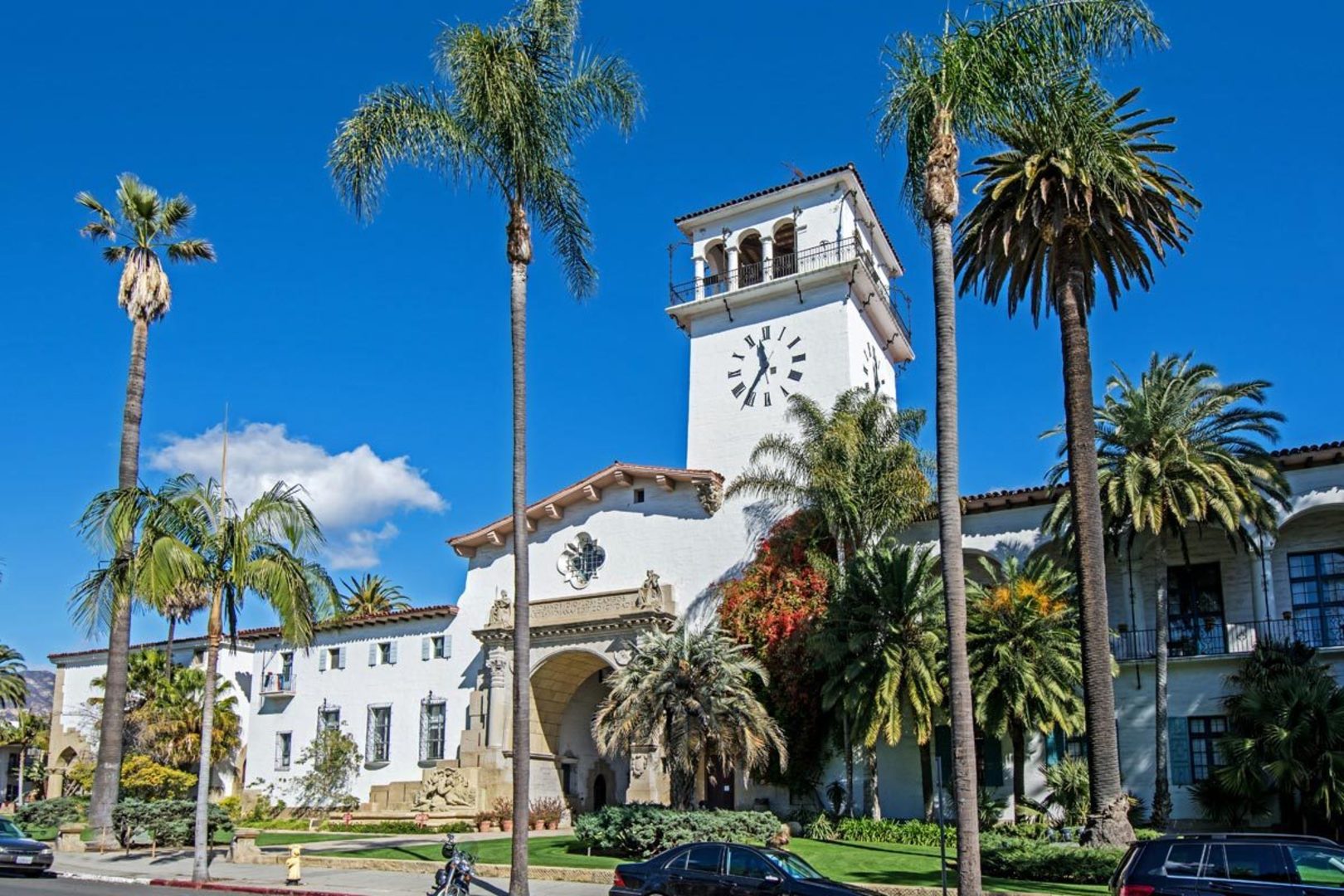Estimated revenues for 2021-22 fiscal year include $19.1 million in cannabis taxes
By Jade Martinez-Pogue
Noozhawk Staff Writer
The Santa Barbara County Board of Supervisors on Tuesday approved the $1.35 billion budget for fiscal year 2021-22, which is an increase of $160.5 million from the current year.
County Executive Officer Mona Miyasato said this is the third year in a row without service reductions in any county department, despite some revenue losses during the COVID-19 pandemic.
“This is a unique and challenging year as we look to improve our resilience and look towards recovery from the unprecedented challenges of the pandemic,” Miyasato said. “As the county approaches the next year, we do so with optimism, but we’re also realistic about the challenges ahead.”
A majority of the increase in the overall budget is related to federal American Rescue Plan Act (ARPA) funding of $43.3 million.
The county expects cannabis taxes revenues to keep growing and raise $19.1 million next year, which is more than the estimate for next year’s sales tax revenues ($12.5 million) and transient occupancy tax revenues ($12.1 million), according to budget documents.
Most of the cannabis tax revenues will come from hundreds of acres of cultivation, and the county expects about $625,000 in revenues from storefront dispensaries. No dispensaries have been permitted and licensed yet in the county, but the county narrowed down the list of operators who are allowed to apply for the limited spots.
About $8 million of the $19 million in cannabis tax revenues will be spent on county cannabis program administration and enforcement costs, and another $5.5 million was dedicated to other ongoing expenses, not all cannabis-related, according to the County Executive Office.
The County Executive Office recommended changing the policy of using these revenues only for one-time expenses, and said 75% of cannabis tax revenue would be available to fund any ongoing expenses — after funding cannabis program costs — and the rest would be spent on one-time expenses and a reserve fund.
“This policy change results in $6.3 million of cannabis tax revenue available for discretionary uses,” the County Executive Office wrote in a budget summary.
“The ongoing funds support enhanced cannabis education, compliance and permit processing functions, critical needs for criminal justice departments, and set-asides for future needs related to elections, In-Home Supportive Services, Crisis Intervention Teams and homelessness operation services.”
The Board of Supervisors allocated $2 million of the cannabis tax revenues to the Foothills Forever campaign to stop development on a portion of the San Marcos Foothills property, and is spending $100,000 to match Coastal Conservancy grants.
Some of the one-time funding items from ARPA funding include $7 million for purchasing a homeless shelter facility in Isla Vista; $4 million for road maintenance; and $5.5 million for capital improvement projects.
Supervisors allocated $20.3 million overall in one-time expenses using ARPA and cannabis tax funding.
The board will make decisions in October on how to spend another $25 million in ARPA funding, with $8.5 million available for discretionary spending, said Assistant County Executive Officer Nancy Anderson.
For the 2021-22 fiscal year, the budget includes 4,347 full-time equivalent county employees, an increase of 41 from the previous year, and the general funds totaled $483 million, nearly an 8% increase from the previous year.
Of the general funds, $327.4 million are discretionary revenues in which the board has some limited flexibility on spending, said Anderson.
The county’s operating expenditures total $1.33 billion, with 53% going towards salaries and employee benefits and 35% towards services and supplies.
The health and human services departments, which include Behavioral Wellness, Child Support Services, First 5 Santa Barbara, the Public Health Department, and Social Services, make up $25 million of the general fund contribution and account for $453 million of operating expenditures. Employees in these departments total 41% of the county’s full-time workforce.
The community resources and public facilities departments, which include Agricultural Weights and Measures, Community Services, Planning and Development, and Public Works, make up 6% of the general fund contribution, at $21 million, and 18% of the operating expenditures, at $244 million.
These departments make up 12% of the county’s full-time equivalent employees.
The general government and support services departments, including the Auditor-Controller, Clerk-Recorder Assessor, General Services, Human Resources, and Treasurer-Tax Collector, contribute $40 million, or 12%, to the general fund revenues and spend $118 million, or 9%, of operating expenditures. These departments account for 8% of the county’s full-time equivalent employees.
The policy and executive departments, which include the Board of Supervisors, the County Executive Office, County Counsel, and general county programs, make up 27% of the general fund contribution and 9% of the operating expenditures. There are 107 full-time equivalent employees among these departments, which account for 2% of the county’s total.
The public safety departments, which include Court Special Services, the District Attorney’s Office, the Fire Department, the Probation Department, the Public Defender’s Office, and the Sheriff’s Office, make up for 47%, or $154 million, of the general fund contribution. They also account for 30%, or $397 million, of the county’s operating expenditures and 36% of the county’s full-time equivalent employees.
Public Safety Department expansion requests
District Attorney Joyce Dudley and Public Defender Tracy Macuga both asked the Board of Supervisors to fund additional positions, and the exchange turned heated when Macuga said that the workload falls largely on the Public Defender’s Office.
Macuga and the Public Defender’s Office asked for an additional $152,000 to fund two misdemeanor staffing positions.
“To have a fair and equitable justice system, you need a strong Public Defender’s Office,” Macuga said.
Macuga said that those calling for criminal justice system reform feel “unheard and ignored” when annual budgets continue to prioritize policing, prosecution and incarceration over the community.
The Public Defender’s Office received a $637,000 grant to fund a post-conviction relief unit, but granting the District Attorney’s Office additional money would create a wider gap in resources, Macuga said.
“This is like when you receive a grant to level the playing field, and then the playing field is unleveled again because funding is put to oppose the work that we’re doing,” she added.
Dudley asked for $259,100 to pay for someone to work on post-conviction litigation.
“We seek safety for all as we attempt to keep people safe in their own homes, safe on our streets and stores from homicides and assaults, safe on campuses from hate crimes and rape, and we want to keep our businesses alive and thriving by protecting them from environmental hazards, theft, and embezzlements,” she said.
“And we want to do all this and more because that is our job. That is our responsibility.”
During the meeting, Fifth District Supervisor Steve Lavagnino accused Dudley and Macuga of attacking one another and said neither of the presentations were helpful.
“That was two sides digging their heels in. Based on body language and tones on both sides, there are some deep-seated issues here,” he said. “This isn’t the county family, this is a freaking dog fight and I’m done.”
The Public Defender’s Office was granted funding for additional staffing, and supervisors did not vote to approve the extra funding for the District Attorney’s Office position.
The Sheriff’s Office requested an additional $1.1 million in ongoing funding and $137,400 in one-time funding for more cannabis compliance team positions and a data center replacement fund. The office changed its original request for a whole new cannabis compliance team to two full-time employees for compliance and enforcement detectives.
County cannabis enforcement includes members of the Sheriff’s Department and other public safety departments, and is budgeted to cost $3 million for the next fiscal year.
Sheriff Bill Brown’s requests for additional funding were not granted, but the Board of Supervisors had previously agreed to fund a body camera program for the department.
The Board of Supervisors also allocated $6.75 million of one-time funding for mobility projects, a building energy management system, a library system consultant to staff an executive committee, parks and open space in North County and South County, and Santa Maria recreational opportunities.
Noozhawk staff writer Jade Martinez-Pogue can be reached at jmartinez-pogue@noozhawk.com.







